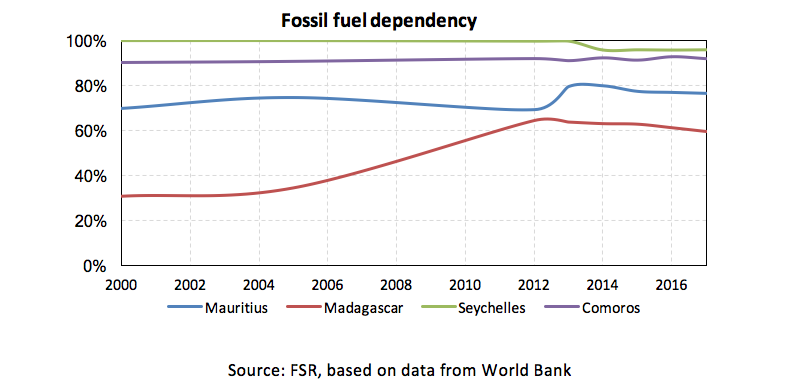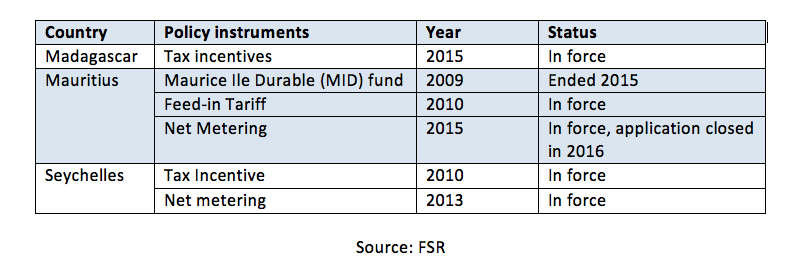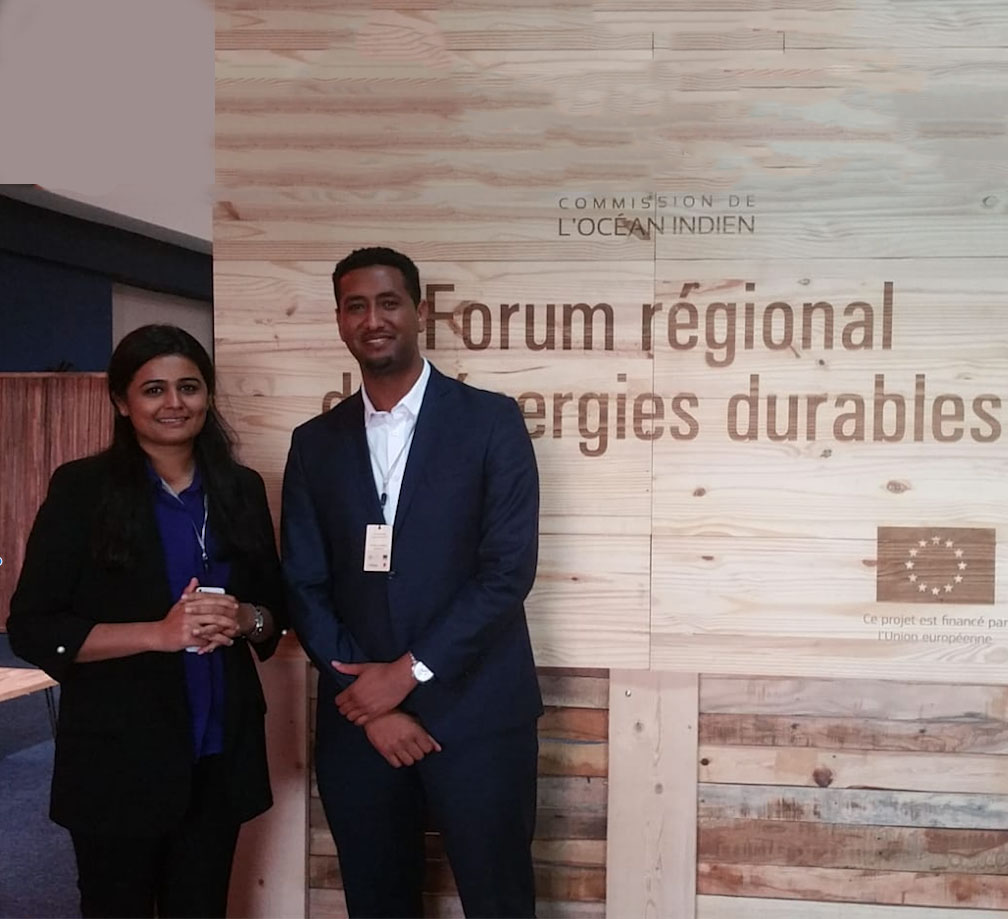Week 3 – FSR Topic of the Month:
Energising Islands in the age of transition
This month, the FSR is featuring the energy transition in the Indian Ocean islands of Mauritius, Seychelles, Madagascar and Comoros, presenting findings based on our engagements with the island nations. In our last two posts, we highlighted the particularities of energy transition in the context of these islands and how Madagascar and Comoros are dealing with the dual challenge of transition to clean energy system and electrification. In this week’s post, we provide an overview of the main drivers and roadblocks for renewable energy penetration and measures that have been introduced to promote and integrate renewables into the system.
Written by: Swetha RaviKumar Bhagwat & Samson Yemane Hadush
The transition to a clean energy system on the Indian Ocean islands is not only driven by the climate change agenda but also by their ambition to gain energy independence. The energy system of these islands is characterised by a heavy dependence on imported fuel, as shown in figure 1 below. This can have negative implications on the competitiveness of industries and the overall economic performance of the islands. The adoption of renewables is therefore seen as a solution to improve and maintain their respective energy security. For instance, Seychelles has been entirely dependent on imported fuel until around 1.354 MW solar PV systems, and 6 MW of wind power were added to the energy mix, representing 2.1% of the energy production, which reduced the fuel oil import by around 2 million litres in 2016.

The adoption of renewables and choice of technology also faces some roadblocks. These include lack of scale advantage to make renewables competitive, the limited hosting capacity of the grid, limited available land area, and environmental restrictions which are often linked to the visual impact of renewable technologies like wind farms.
Yet within this context, various renewable support instruments have been introduced to promote renewables and integrate them into the power system.
Promotion of renewables
Some of the policy instruments that have been introduced on the Indian ocean islands include setting renewable portfolio standards (i.e. renewable targets), tax incentives, feed-in-tariff schemes, net metering and in some cases setting up a renewable energy fund. The table below shows the types of policy instruments that have been introduced on the IOC.

Tax incentives for renewable energy projects have been introduced in Seychelles and Madagascar. In Madagascar, renewable energy investors can benefit from a reduction in their corporate income tax, VAT exemptions, and an accelerated depreciation rate of 30% for investment in renewable energy equipment. While in Seychelles, imported renewable energy-related goods are exempted from a goods and services tax.
A renewable energy fund, collected through a carbon tax on fossil fuel, was introduced in Mauritius in 2009, named the ‘Maurice Ile Durable (MID)’ fund. It was designed to finance necessary renewables as well as efficiency projects. The fund phased out in 2015.
Some pricing instruments such as the net metering and feed-in tariff have also been introduced. Mauritius and Seychelles have introduced the net-metering program in 2013 and 2015, respectively. In Seychelles, it was introduced to promote the use of renewable energy in both residential and commercial sectors. In Mauritius, it was designed to enable around 2000 small customers, especially households, to interconnect their renewable energy installations into the grid at zero cost for backup service and energy storage. The total net capacity to be integrated via this scheme is approximately 7 MW. The scheme was also extended to medium scale customers, with the intended capacity addition of 10 MW.
The feed-in tariff scheme (FIT) has been introduced only in Mauritius, targeting investments in small-scale distributed generation by private producers. The goal was to mobilise 2 MW of power, which was later increased to 3 MW. It was open to any renewable technology, and the tariffs were fixed for 15 years. Yet to qualify for this tariff a producer must have a self-consumption rate of at least one-third of the total energy amount produced by its installation. The application to this scheme was closed in 2012, as the 3 MW target was achieved. Afterwards, the utility (Central Electricity Board (CEB)) decided to extend the project to new categories of subscribers, public, educational, charitable and religious institutions for a total capacity of 2MW.
Some of these instruments have been designed and implemented by the utility, notably the feed-in tariff and net metering schemes in Mauritius. A recent scheme implemented by the CEB is the ‘Home Solar Project’, which targets vulnerable customers by providing them with electrification using the BOO (Build Own Operate) model. The CEB will take full responsibility for setting up and managing the renewable energy system on rooftops, in return for which the consumer will be charged a fixed price that would be both affordable and reliable. If this scheme is successful, the utility plans to extend it to other consumer classes.
Grid integration of renewables
While the instruments have been implemented to promote renewables and increase their share in the energy mix, the island economies have also undertaken some grid integration studies, and grid codes have been introduced to guide the connection of distributed renewable energy resources. On most of these islands, the system is operated on an N-2 reliability criterion, (instead of N-1) which requires a higher cost of integrating intermittent generation into the system. As a result, the current grid of Seychelles can only host a maximum of 8% intermittent renewable energy.
Listen to our interview with L. Sam (Public Utilities Corporation, Seychelles):
Furthermore, the new dynamics of the system with more distributed generation has forced the islands to revisit their grid codes and in some cases introduce new codes to manage their grids better; particularly in Seychelles, Mauritius and Madagascar. The regulator is also playing an active role in the designing of these grid codes.
For more details on renewable energy best practices on these islands, read our upcoming report to be launched in October 2018.







